12+ Practical Safety Tips for Solo Female Travel in Japan
14 min readI traveled solo to Japan twice last year, and it was, to date, one of my most memorable trips. My first solo trip to Japan was a 10-day jaunt from...
The post 12+ Practical Safety Tips for Solo Female Travel in Japan appeared first on Bucketlist Bri.
Disclosure: This post may contain affiliate links, which earn me a small commission from bookings at no extra cost to you. Thank you for reading and supporting my blog!
I traveled solo to Japan twice last year, and it was, to date, one of my most memorable trips.
My first solo trip to Japan was a 10-day jaunt from April to May through the classic triangle of Kyoto, Osaka, and Tokyo. During this time, I truly checked off my “dream” bucket list destination.
Everything was alluring, new, and incredibly exciting!
On my second solo trip to Japan, I had the lovely chance to travel even deeper for one month, from February to early March.
For my third time in Japan, I spent three months housesitting over the summer. Although I wasn’t entirely solo, I still had a few bridge weeks when I was on my own.
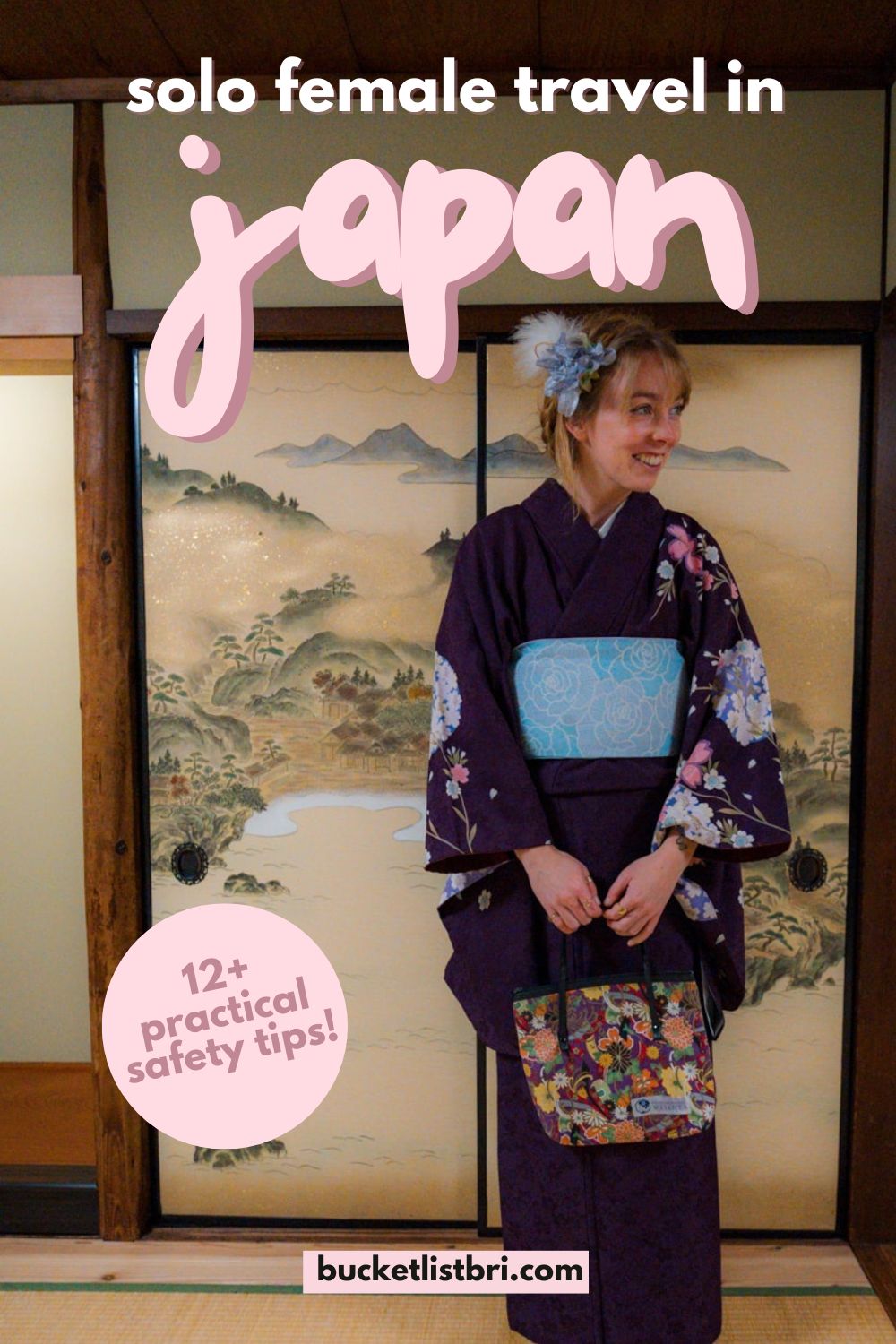
From these experiences, I can attest that Japan is safe for solo female travelers, and it is one of my favorite destinations for solo travel—period!
In this guide, I’m happy to share my insights about traveling across Japan alone as a woman.
I’ll also recommend hostels, neighborhoods, and other accommodations and resources so you can feel more prepared to travel to Japan alone.
Whether this is your first solo trip ever, or you’re already a pro, I hope my experiences can help you better navigate Japan solo!
The Ultimate Guide to Traveling Japan as a Solo Female Traveler
Solo Travel Japan Starter Kit: What to Prep Before You Go
✈️ Travel insurance: Stay safe in Japan with SafetyWing Nomad Insurance—ideal for travelers and remote workers on the go ($56 per 4 weeks).
📱 Japan eSIM: Get data in Japan without changing your number with an easy-to-install Airalo eSIM.
🚕 GO app: The #1 taxi app in Japan for hailing affordable taxis straight from your phone.
🤝 Meetup: My go-to website for finding social and community events in Tokyo!
🏨 Female-only accommodation: I use Booking to find female-only capsule hotels in major cities.
I want to start by saying that even if you plan nothing for your solo trip to Japan, you will be okay.
Japan is an easy country to navigate solo.
For example, even if you don’t book your train ticket in advance, there are so many, and you will be able to pivot plans.
Hotels and activities are a bit different, though.
You will want to plan those core essentials in advance for better selection and prices.
Even a little advance planning can help you feel safer and more confident and allow you to infuse flexibility into your schedule.
Admittedly, planning your Japan trip can feel daunting.
There is SO much pressure from social media to curate the “perfect” itinerary. You have no one to lean on for advice or recommendations when you’re solo.
I recommend covering the basics: navigation, insurance, accommodation, and a rough itinerary idea first, before setting out!
1. Get a Japan eSIM to get data without changing your phone number

Download the Airalo app and install a cheap Japan eSIM.
Once installed, you can switch the line on/off and get data instantly while abroad and without changing your phone number.
While major cities like Tokyo, Kyoto, Osaka, Hiroshima, etc., have free WiFi hotspots throughout parks and the city—in addition to numerous cafes with WiFi—you’ll need data on your phone to easily follow Google Maps for train and metro times, restaurants nearby, and safety overall.
Japan eSIMs with Airalo cost only $6.50 for 2GB, which is more than enough for navigation (don’t use it for social media posting—wait until you’re at your accommodation or at a cafe).
💝 Use my code BUCKETLISTBRI3 for $3 off your first eSIM with Airalo.
2. Sign up for a budget-friendly travel medical insurance
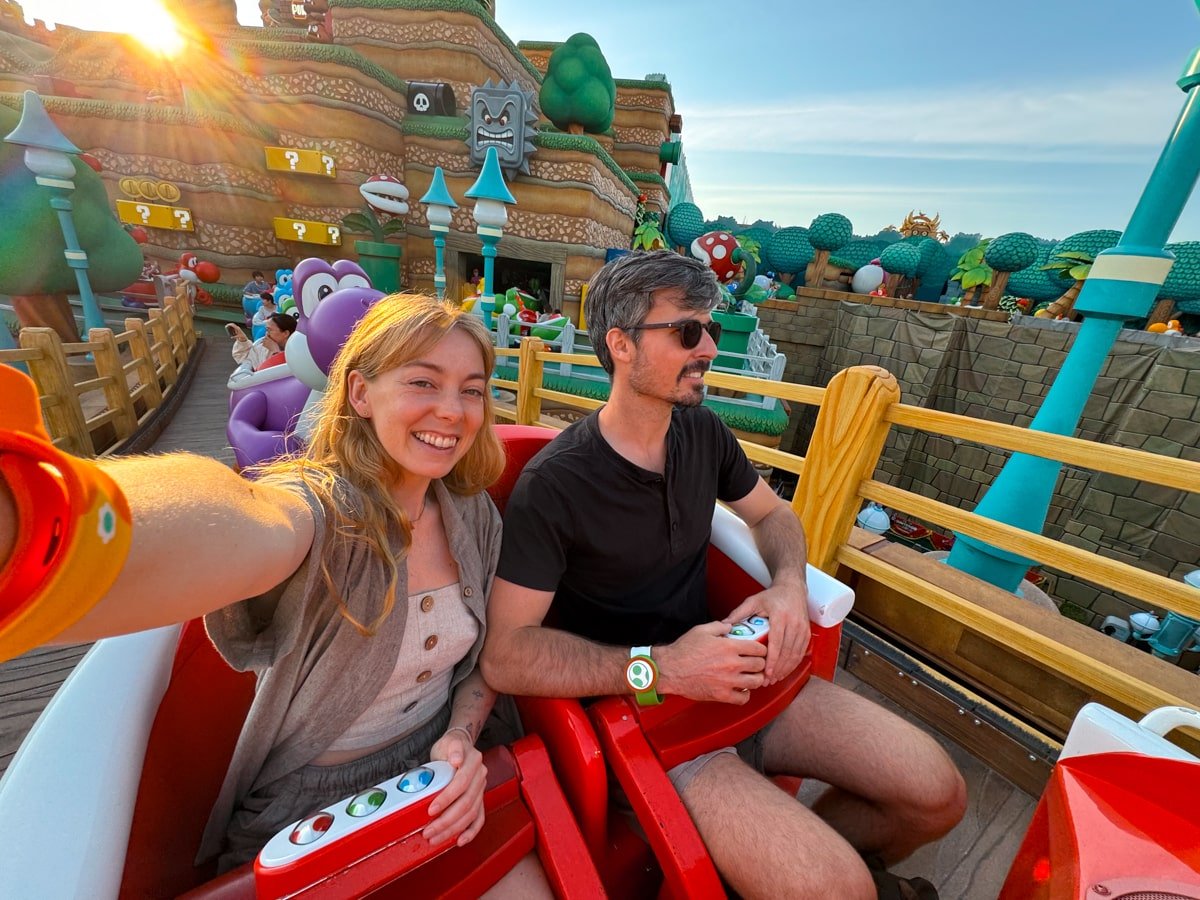
I have used SafetyWing Nomad Insurance since 2018 to cover all my solo, nomadic, and international travels.
It costs $56 every four weeks, so if your solo Japan trip is two weeks, it’ll cost roughly $28.
That’s very inexpensive compared to other travel insurance plans!
The best part (and why I use SafetyWing) is that you can buy abroad or set a start date, so you’re covered the second you land in Japan. Sign up here (it takes less than five minutes).
3. Make sure to use Google Maps (the most reliable for Japan transport)
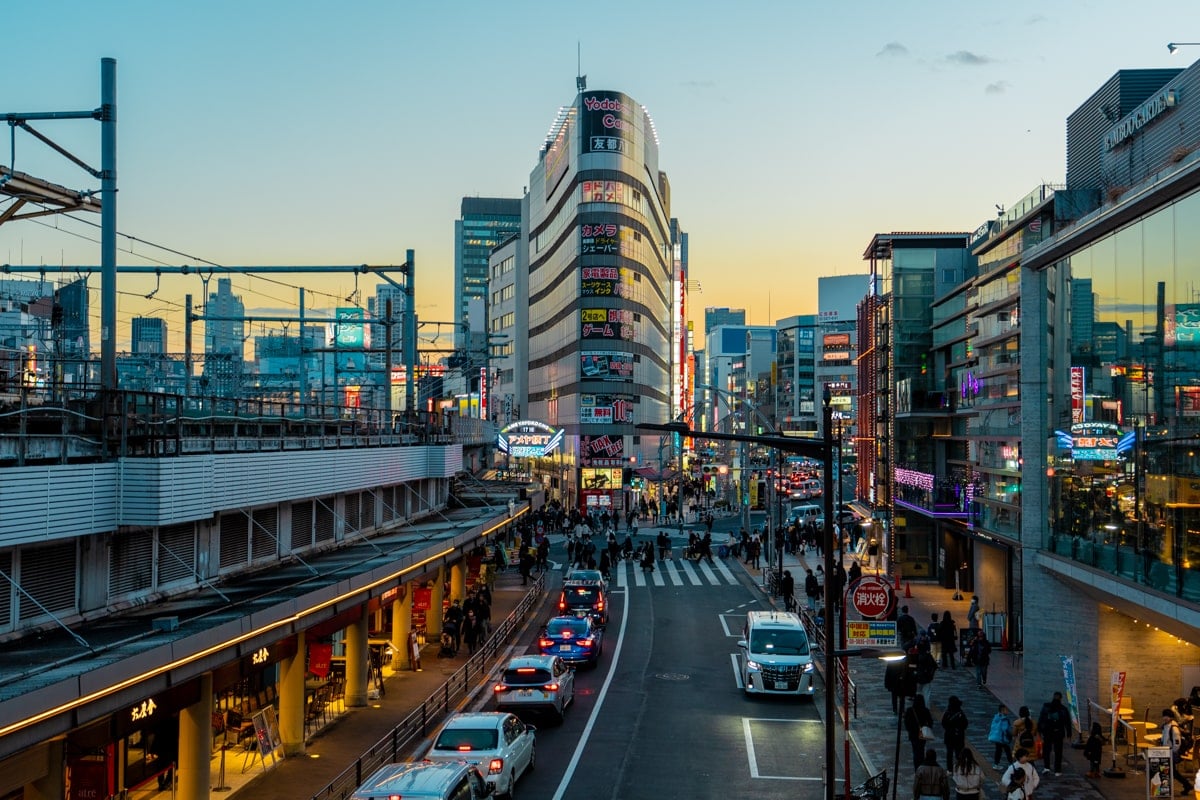
I am stupidly proud that I have only taken the wrong train once in my solo travels across Japan—from Tokyo to Hiroshima to Kyoto, Fuji, and beyond. Once!
Google Maps is my trusty navigating sidekick while traveling Japan, solo or not. The metro and train information that Google Maps displays helps you navigate the sometimes complex transportation system in major cities (and even in rural areas).
If you’re worried about running out of data or having spotty connection areas, you can also download offline Google Maps. However, note that this will not populate live train times and delays.
Another app to download is GO. It’s the taxi-hailing app in Japan, and it’s so efficient. It is more expensive, but if you’re lost and unsure how to get from point A to point B by train or subway, just hail a taxi and pay for it on your phone.
4. Download an Icoca/Suica transport card to your Apple Phone or Watch
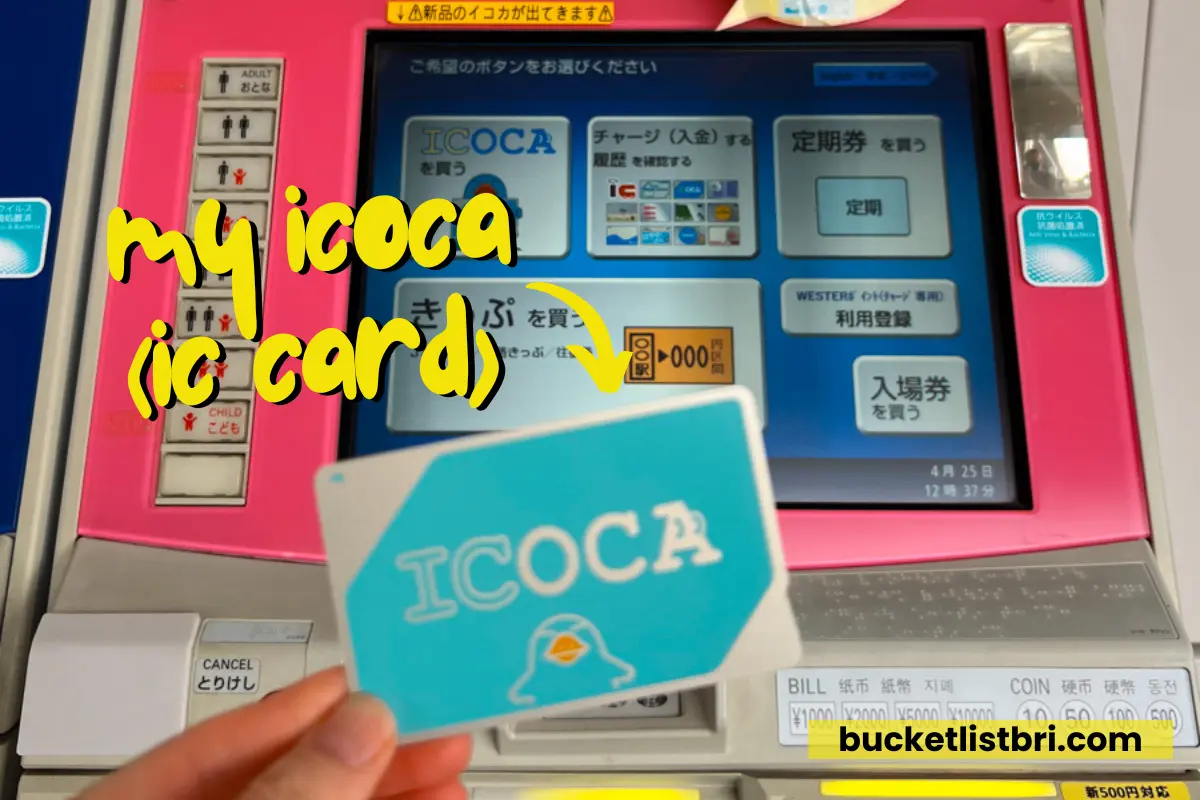
Don’t buy individual metro/subway or train tickets from the ticket machines. This is so complicated!
Instead, buy a transport card such as a Pasamo/Suica/Icoca. These cards can be downloaded digitally onto your Apple wallet or watch (Apple users only) and recharged from your wallet.
Physical cards are available for purchase from the ticket machines. They cost just a couple of dollars. You can recharge funds from the ticket machines by placing your card and inserting yen.
Tip: If you have only a 10,000-yen bill, you can insert that and select to charge only 1,000 yen or 2,000 yen on the screen (an excellent way to get change!).
Why I Feel Safe as a Solo Female Traveler in Japan
There are two main reasons why I feel safe traveling in Japan:
- The Japanese deeply value community and are courteous and respectful, so I generally feel secure and cared for.
- It’s common for Japanese women and men to eat out and do activities alone, making me feel confident doing these things myself!

Firstly, please don’t assume that because you’re in Japan, all Japanese people have your best interest at heart.
There is a reason that there are women-only train cars in Japan; some men are pervy, and some men take advantage of crowded situations to grope women.
While it can happen, it doesn’t mean it’s highly likely to happen to you just because you’re in a crowded place. But it is good to know so you can always be mindful of your surroundings.
It goes without saying (but I will anyway!), always listen to your gut. Stay open and trusting of yourself and your confidence. Feel situations out.
I’ll never forget when, around 10 pm on a weekday in Kyoto, I ducked into an old ma-and-pop restaurant specializing in okonomiyaki—the Osakan “savory pancake”—and the 4-5 men sitting at the bar turned to look at me for a half-second in shock, before shifting and generously making space for one more.
Before the end of my meal, the shopowner’s elderly wife came over and gifted me with a bag brimming with Japanese sweets, crackers, and even a pair of tiny, handmade origami cranes as a thank-you for coming to eat in her place. I didn’t get to ask how long she and her husband have operated that old restaurant. I went teary at her kind gesture. 🥹
Can you imagine! Put me anywhere else and tell me to walk into a dingy hole-in-the-wall late at night with only men and smoke, and I’d politely say no thank you.
This example from my myriad experiences highlights how the Japanese are courteous, especially to foreigners and guests. Being considerate, welcoming, and respectful of others is a part of their culture.
This respect for others makes me feel more at ease while traveling in Japan. It’s a very different feeling than when you’re traveling in a patriarch-dominated culture, such as India or Morocco, where women are treated differently.
As mentioned above, I feel safe solo traveling in Japan because no one cares that you’re alone.
In Japanese society, it’s common for men and women to eat out and do activities alone.
No one stares or thinks you’re out of place if you go into a restaurant, shop, or visit a place or attraction just on your own, taking selfies and whatnot. I love that!
How to Plan Your Solo Japan Itinerary

Next, I recommend you plan your solo trip slowly. For example, opt for at least one week in each destination instead of staying only 1-2 nights there.
This way, you won’t miss out on experiencing the destination a bit deeper.
Secondly, I encourage you to visit Japan off the beaten path. While the classic Tokyo-Kyoto-Osaka itinerary is popular for a reason, you’ll experience a different side of Japan in the countryside.
Nagano, Hokkaido, and Kyushu are other prefectures with unique destinations for solo travelers and digital nomads. Ultimately, where you go all depends on the time of year you plan your visit and how long you intend to stay.
There is no shame in doing the classic itinerary as many first-timers do (I did as well!). Even in these popular places (Kyoto, Tokyo, etc.,) there is room to venture where few crowds go.
My first time in Kyoto, I didn’t even journey into Gion until my last day. I stayed in a far-out Airbnb in an old, forgotten district with only very local bathhouses and eateries. I was the only foreigner trapezing around the neighborhood, and I had the best time soaking up Kyoto in a slower way.
I must note that I typically enjoy slowing down in places as it allows me to work some days.
However, if you’re taking this solo trip to Japan vacation-style and wanting to pack in as much as possible for a once-in-a-lifetime trip, then I definitely understand that.
In that case, you’ll for sure want to plan your trip more strictly, including outlining your top desired activities in each destination, organizing your hostels/hotels in advance, and possibly opting for a JR pass (otherwise, you don’t need it for slower travel).
Areas to Avoid in Japan’s Major Cities as a Solo Female Traveler
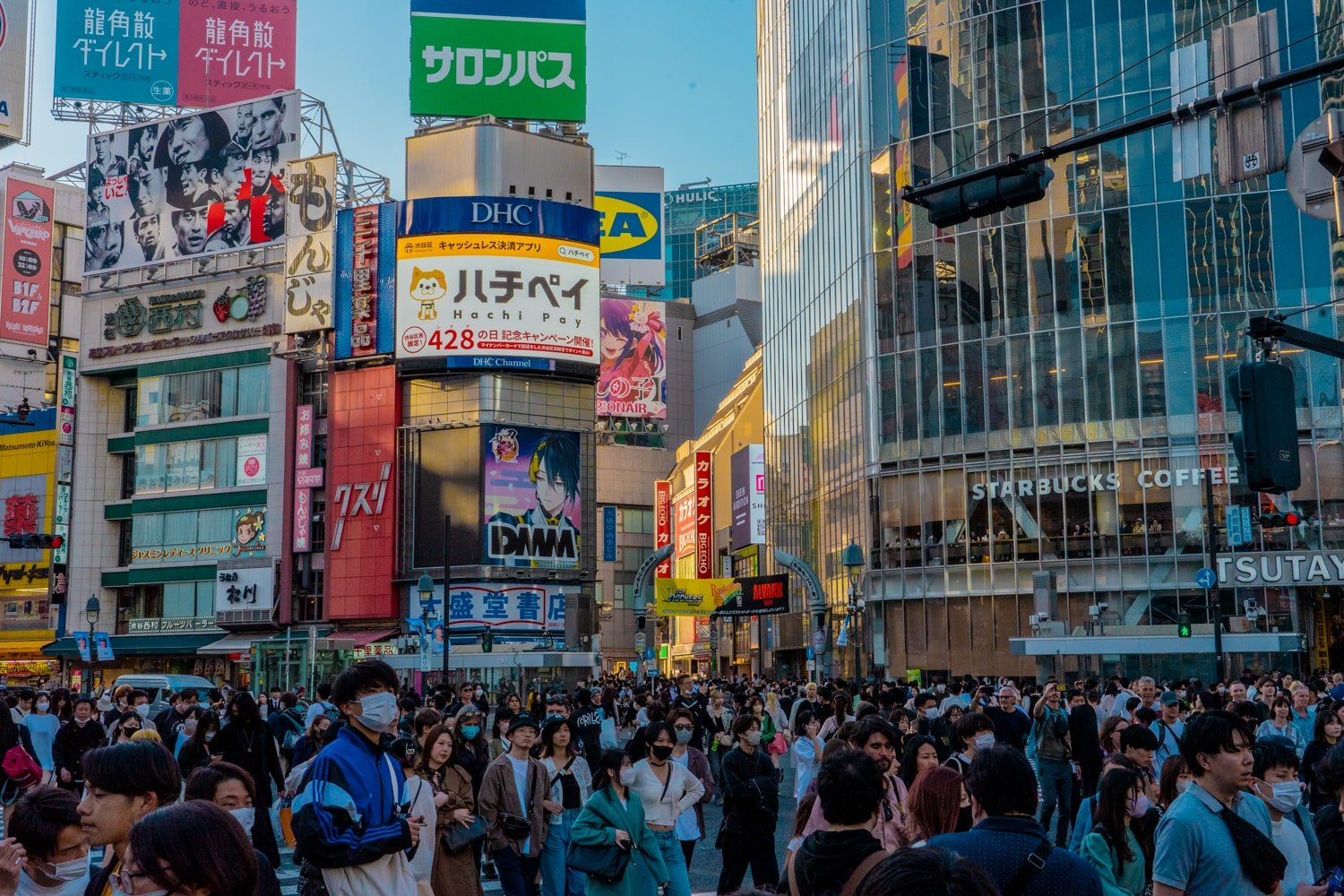
As I’ve stated, Japan is one of the safest countries in the world, especially for solo female travelers.
However, popular nightlife districts in major cities such as Tokyo, Osaka, and Kyoto can become chaotic and feel unsafe.
These “sketchy” situations can be avoided by not going to nightlife areas to drink or club alone.
If you want to experience famous nightlife and socialize in Tokyo, I highly recommend signing up for Tokyo street food tours!
Tokyo
- Kabukichō (Shinjuku): Known as Tokyo’s red-light district, Kabukichō is bustling with bars, nightclubs, and “adult entertainment” clubs. While exploring during the day or early evening is generally safe, it can become rowdy late at night.
- Roppongi: Popular for nightlife, Roppongi is generally safe but has a higher chance of encountering aggressive touts, overpriced drinks, or spiked beverages in some bars and clubs. My rule of thumb is NEVER to go drinking alone unless in a group!
- Ikebukuro (East Exit): While most of Ikebukuro is fine, the area around the East Exit has some hostess and gambling clubs, which can feel sketchy if you’re walking on your own late at night.
I will add that Shibuya can also get a little crazy after hours. I generally avoid Shinjuku and Shibuya late at night.
If trash is suddenly piling up on the streets, music is blaring on every street corner, people are yelling, and you see Japanese girls vomiting on the curb, you know you’re out a little too late… 😬
Osaka
I really loved my 2+ weeks in Osaka (I stayed in Juso, in the north), but the Nishinari Ward (such as near the Shinsekai (Tsutenkaku Tower) and Kamagasaki are always noted for being among the city’s “rougher” areas.
Even as you stroll through the crowded Dotonbori, watch your valuables. This touristy area will naturally invite pickpockets!
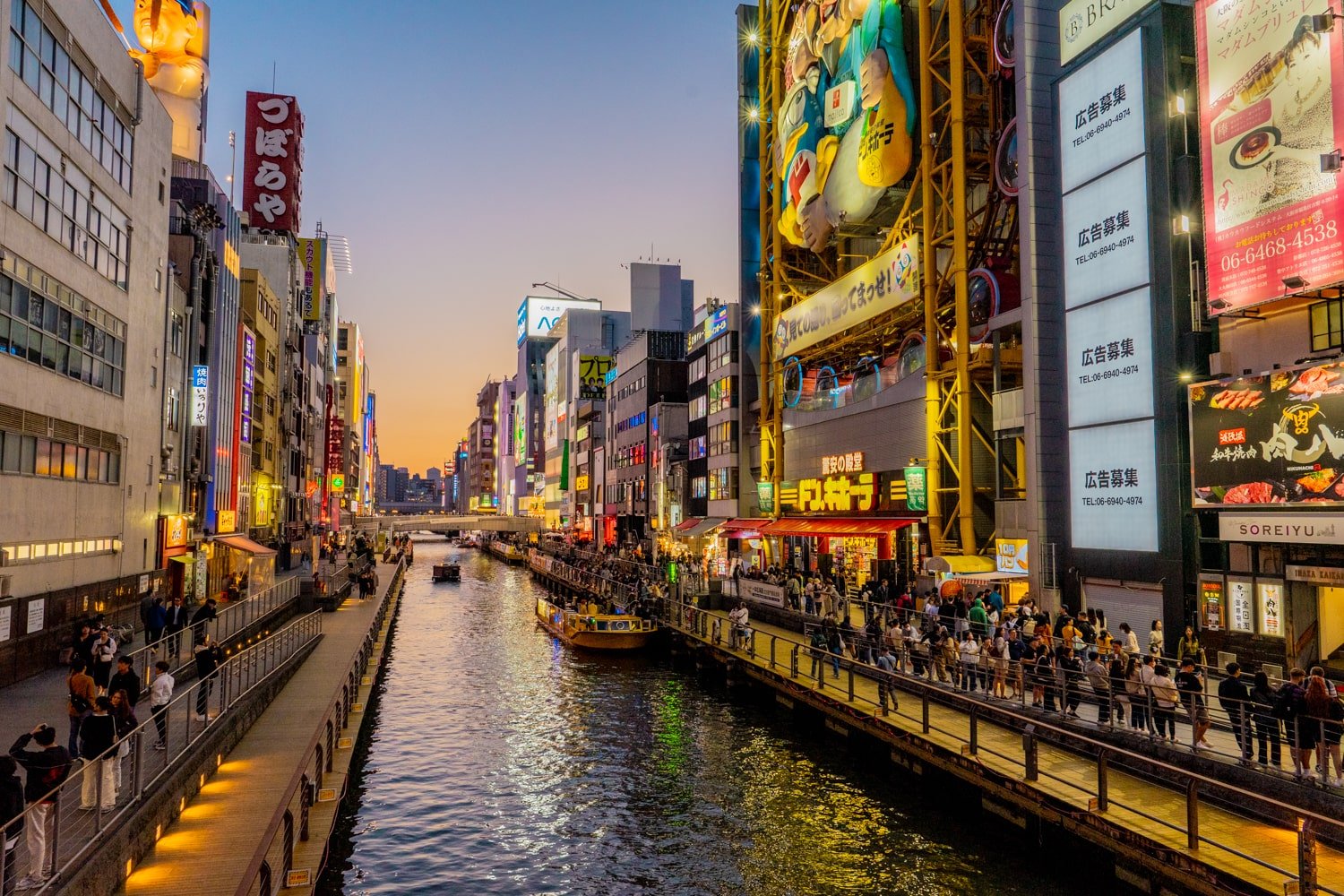
Kyoto
Gion (at night): While Gion is famous for its geisha culture and historic streets, its nightlife can get rowdy, too; sadly, mostly from drunk foreigners.
Nowadays, Kyoto City has cracked down on tourists for irresponsible behavior. For this reason, I would avoid staying out late.
Whenever I’ve felt aggressed in Japan, it wasn’t by locals but by drunk male tourists! 🤦♀️
General Tips for Avoiding Trouble as a Solo Female Traveling in Japan
- Beware of suspicious invitations: Avoid anyone approaching you on the street to guide you into a bar, club, or restaurant, especially in red-light districts.
- Stay in well-lit areas: Stick to areas with good lighting and foot traffic, especially at night.
- Avoid overindulgence: If you drink, stay aware of your surroundings and avoid leaving your drink unattended.
- Stay in female-only capsule hostels: While accommodations in Japan are generally safe, read reviews to ensure you stay in a reputable area! I love to stay in more local, quieter neighborhoods. In big cities like Osaka, if I’m alone, I stay at a female-only capsule hotel.
- Late-night or women-only trains: While public transport is very safe, late-night or crowded trains can lead to uncomfortable situations. Consider using women-only cars when available!
Practical Tips & Safety Advice for Solo Female Travel in Japan
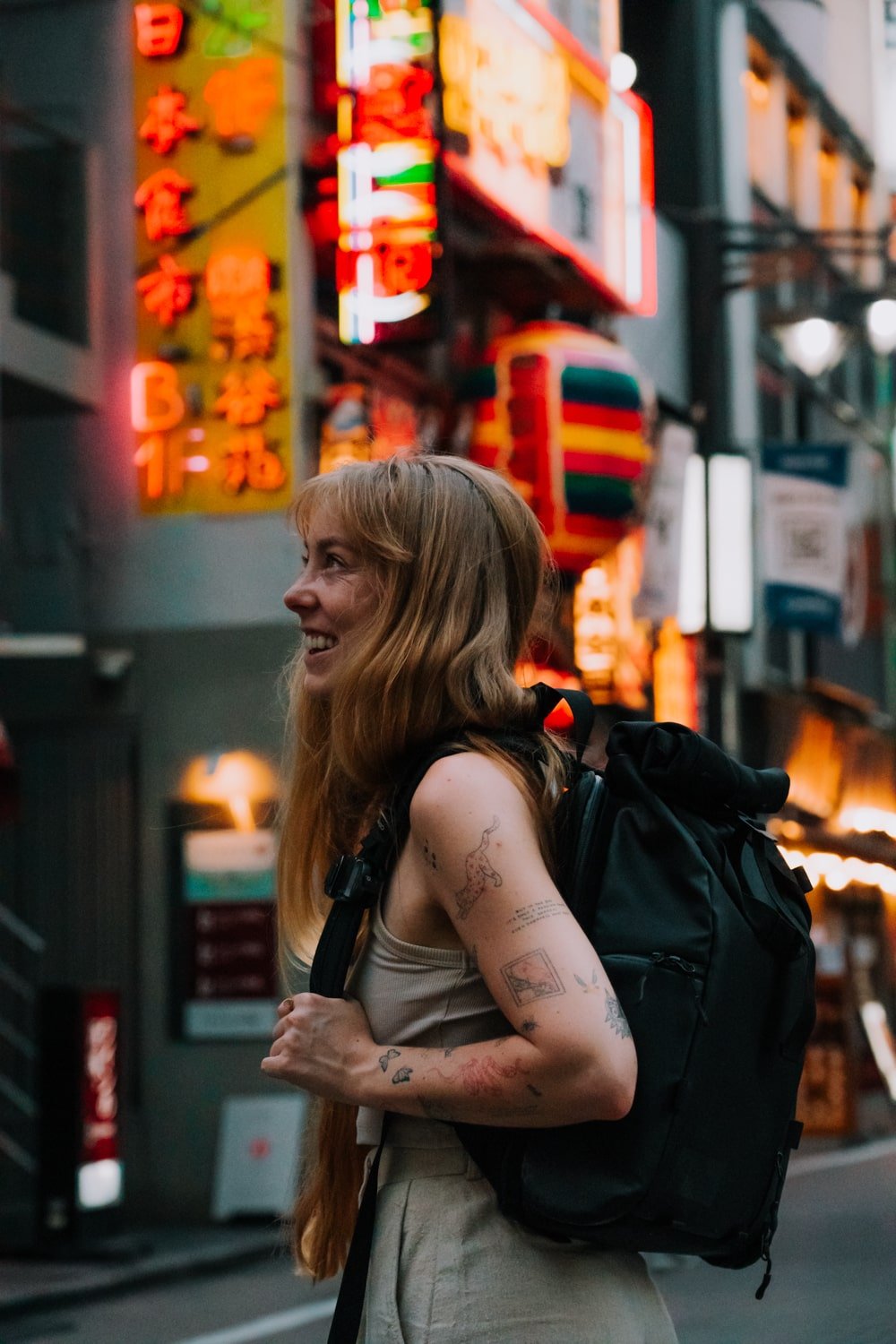
1. Dress respectfully—but comfortably
Japan has a fairly conservative dress culture, especially for women.
It’s very interesting, but while mini skirts and bare legs are common, low necklines and bare shoulders tend to draw more attention. If you want to blend in and avoid stares, consider packing light scarves or layering pieces, like a shirt to wear under sleeveless dresses or tops.
That said, Japan is modern and welcoming, so wear what makes you comfortable within reason! I noticed when I wore thin straps, that I felt stared at (especially with my arm tattoos).
When you visit Japan, pay attention to this interesting way of dressing. You’ll quickly notice that Japanese women rarely show their shoulders or chests. Instead, they wear mini skirts and show bare legs.
2. Book female-only accommodations for peace of mind
If you’re like me (an adventurous introvert), you’ll love Japan’s female-only capsule hotels and hostel floors.
I’ve stayed in several during my trips and appreciated the extra security and comfort.
Many of these spaces also have thoughtful touches like women-only lounges and amenities!
Use Booking.com or to filter for “female-only” options when searching.
Another accommodation option (if you enjoy furry company!) is housesitting with TrustedHousesitters.
I did this, and I was able to live in beautiful apartments in Hiroshima and Tokyo (for free) while caring for dogs (and even a bunny!).
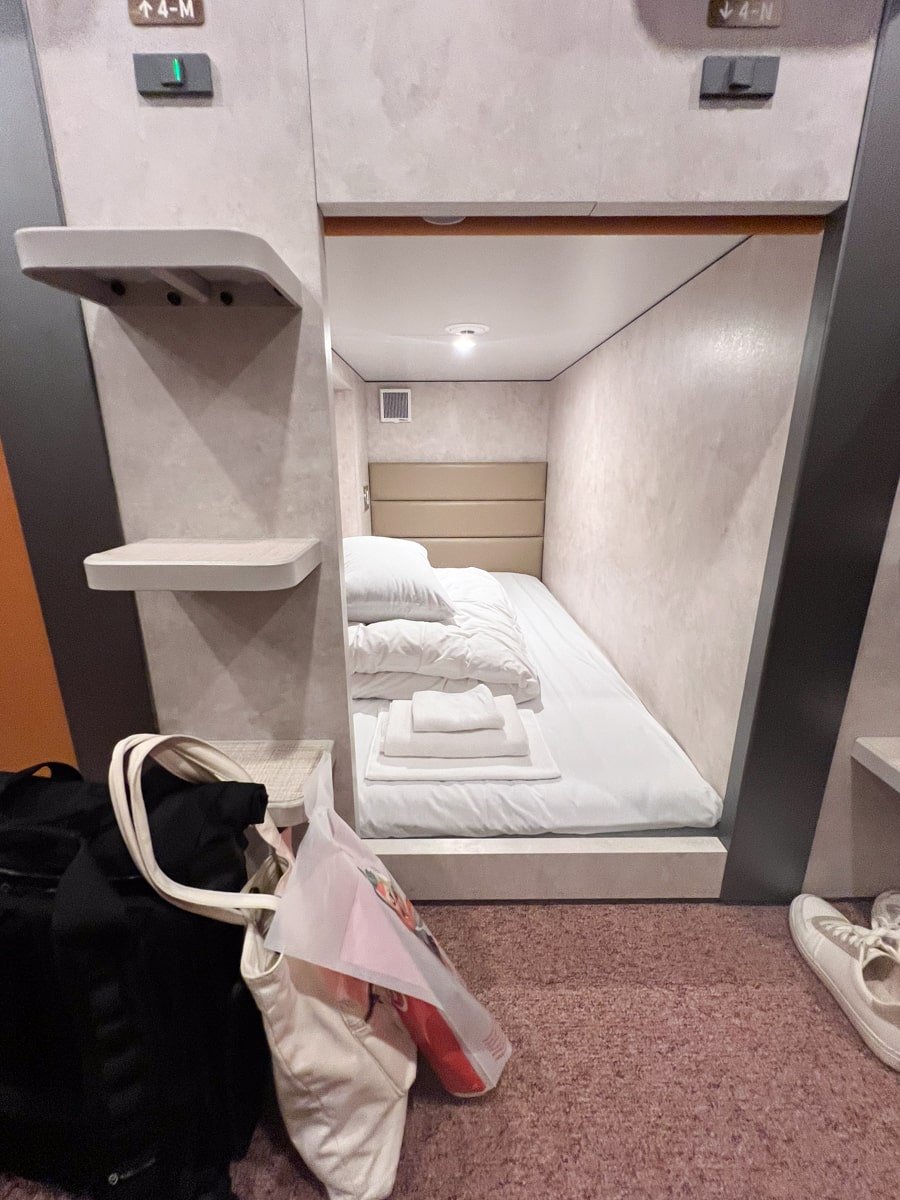
3. Carry your passport—it’s required by law
In Japan, tourists are legally required to carry their passports at all times.
While I usually keep mine tucked away in my bag, I also recommend having a high-quality copy and a digital backup.
You might not need to show it often, but better safe than sorry. Plus, your passport often doubles as a tax-free shopping pass at department stores!
4. Know when to keep your plans to yourself
When meeting new people—whether at hostels, on tours, or in restaurants—it’s fine to say you’re traveling solo, but there’s no need to share every detail.
If someone asks, you can always mention vague plans, like, “I’ll probably head to Kyoto tomorrow.”
Trust your instincts and save your full itinerary for only close contacts.
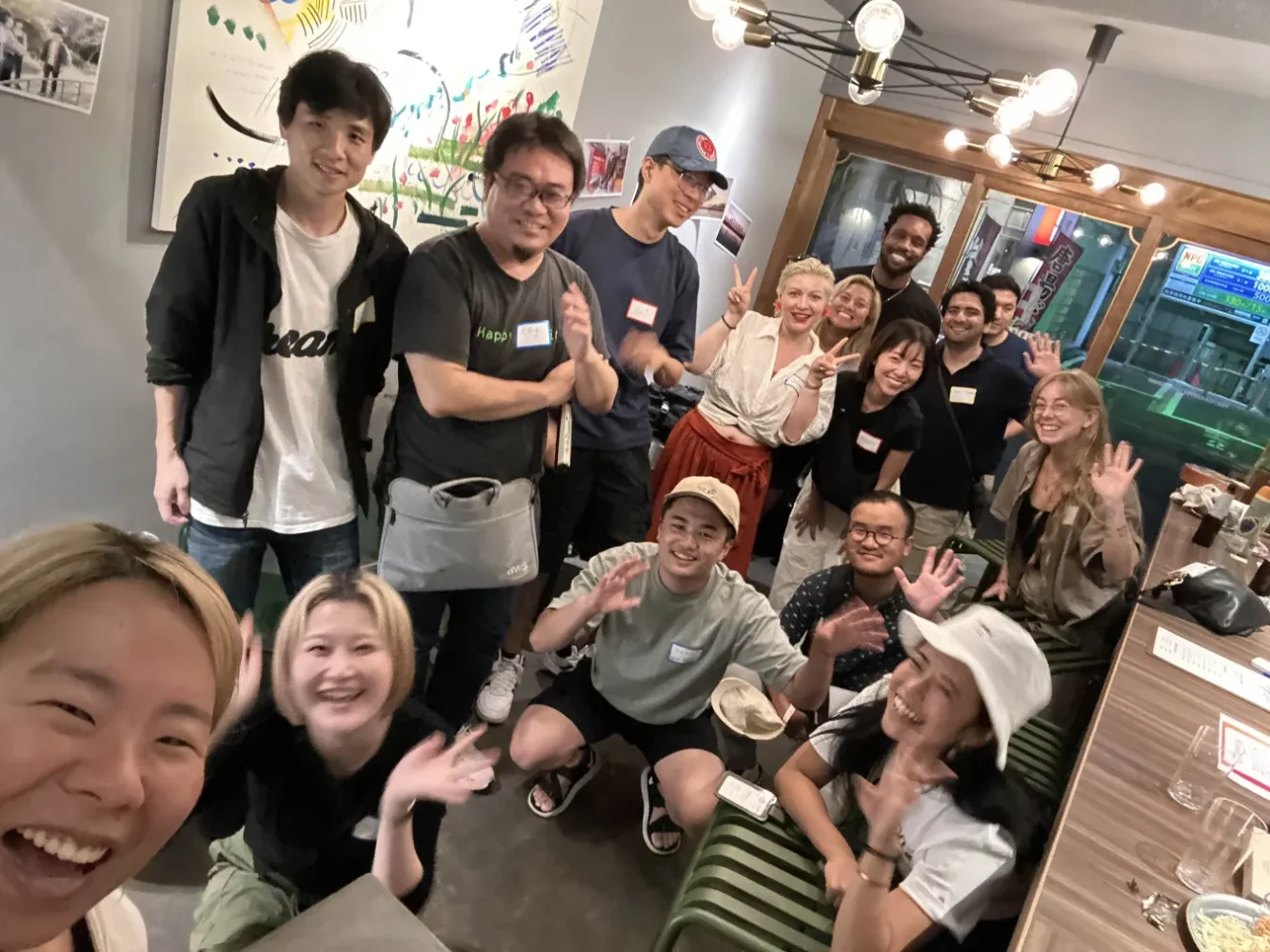
5. Stay mindful of nightlife hotspots
While Japan is one of the safest countries I’ve visited, nightlife districts like Kabukichō (Tokyo) or Shinsekai (Osaka) can feel chaotic at night.
If you’re curious to explore, go with a group or during early evening hours. Personally, I avoid these areas solo after dark and stick to quieter streets or group activities.
6. Be open—but trust your instincts
One of the joys of traveling solo in Japan is the kindness of strangers.
I’ll never forget the shopkeeper in Kyoto who gifted me handmade origami cranes just for visiting her restaurant!
But as much as I encourage connecting with locals, always listen to your gut. If a situation feels off, excuse yourself politely and move on.
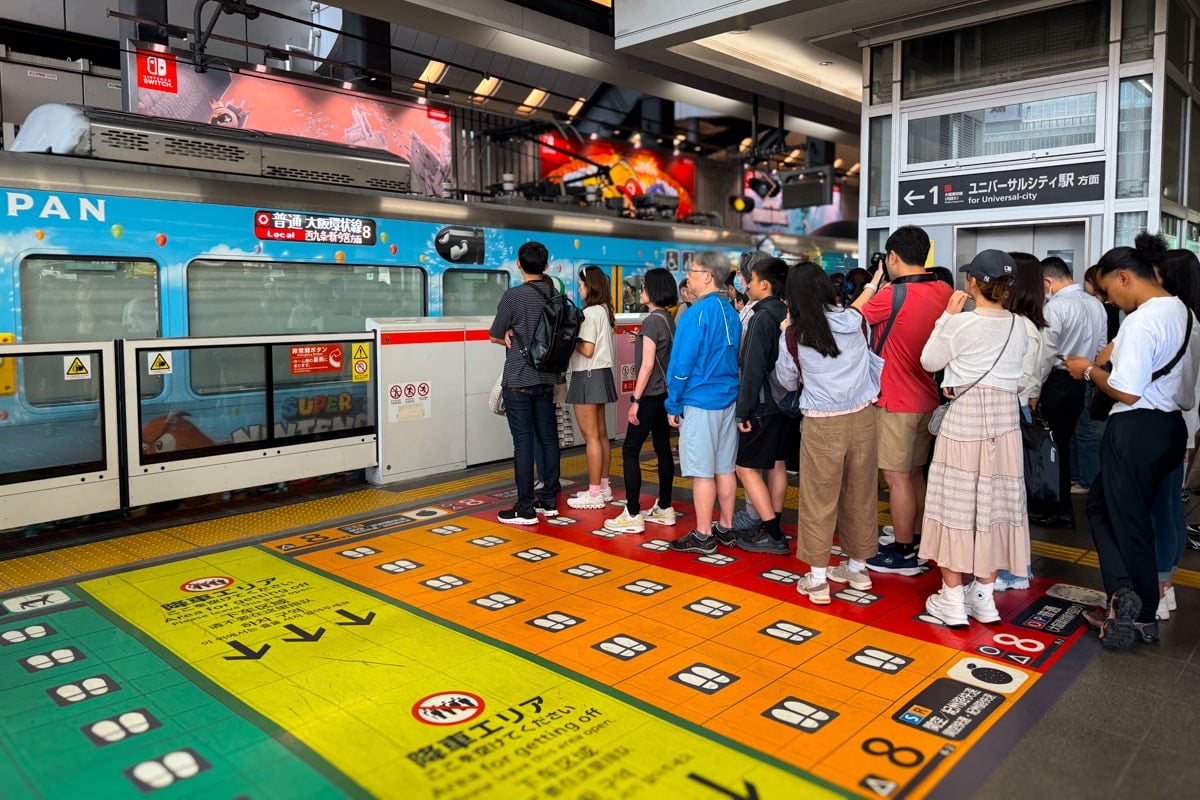
7. Use women-only train cars during rush hours
Japan’s train systems can get packed during peak commuting hours, especially in cities like Tokyo and Osaka.
Thankfully, most train lines offer women-only cars during specific times (usually early mornings).
These are clearly marked with pink signs on the platform and the train itself.
While groping or harassment isn’t widespread, women-only cars provide extra peace of mind if you’re traveling during the chaotic rush-hour crush.
Tip: If you’re unsure about the car, look for signs on the platform or ask a station attendant. A pink label or sticker usually indicates women-only cars!
8. Join group excursions or guided day tours for harder-to-reach spots
Even though Japan’s public transportation is efficient, there are a few destinations where solo travel can feel trickier (like Fuji or rural attractions).
Joining a group/day tour can simplify logistics and provide built-in company for the day.
Some ideas for group activities are:
- Local food tours
- Historical/cultural walking tours
- Cycling tours (like those in Kyoto or Nara or even biking in Tokyo!)
9. Stick to well-lit streets at night
Sticking to well-lit areas at night is always a wise choice even in a safe country like Japan.
Smaller streets in quiet neighborhoods can be extremely dark after sunset, even in bigger and “safer” cities like Kyoto.
Use Google Maps to plan your route ahead of time and avoid poorly lit shortcuts.
That said, I’ve found myself in low-lit streets on multiple occasions and have always felt safe. Confidence is key, in these situations.
10. Be aware of “No Photo” zones
While Japan is incredibly photogenic, some places strictly prohibit photography, especially in shrines, temples, or private establishments.
Look for signs or ask if you’re unsure—taking photos in restricted areas can sometimes result in fines or upset locals.
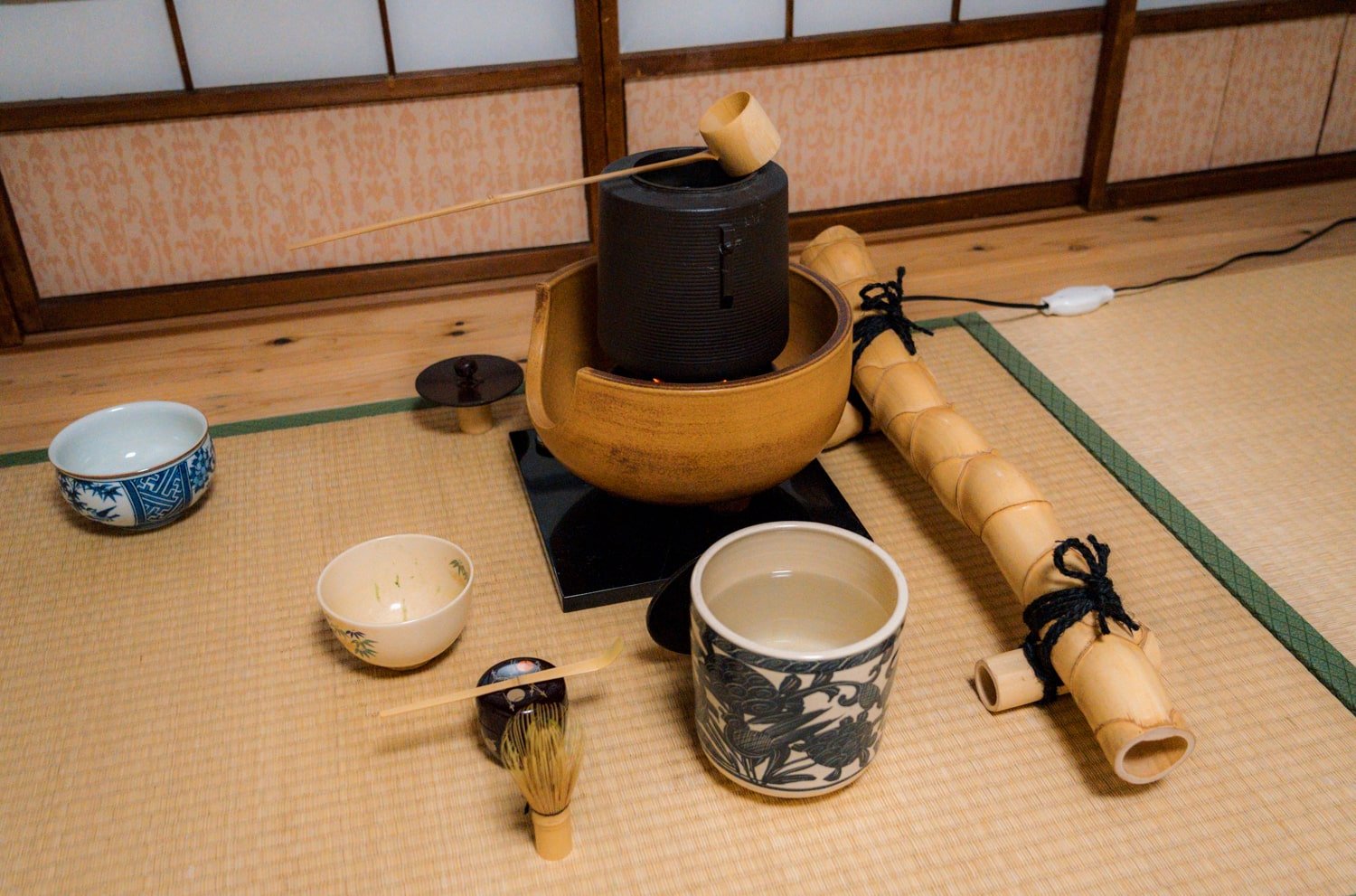
11. Keep basic emergency numbers handy
Save these Japanese emergency numbers in your phone or write them down:
- Police: 110
- Fire/Ambulance: 119
- Non-emergency police: #9110
The Japan Visitor Hotline (050-3816-2787) is also a great resource for emergencies, offering English-speaking assistance 24/7.
Always inform a close friend or family member of your plans when traveling solo!
12. Learn a few key Japanese phrases
While English is understood in most tourist hotspots, learning a few simple Japanese phrases can go a long way:
- Sumimasen (すみません) – Excuse me / I’m sorry
- Arigatou gozaimasu (ありがとうございます) – Thank you
- Eigo o hanasemasu ka? (英語を話せますか?) – Do you speak English?
- Tasukete kudasai (助けてください) – Please help me
Most of all, be courteous and respectful! If you’re lost on the street, need help, or feel uncertain, seek out your nearest local store to pause a moment.
Using Google Translate or Deepl may not be a great way to conversate, but it’s amazing for asking simple and single questions. (“Where is the bathroom? Which direction is the train station? I need help. Does someone here speak English?”)
I set out to make this a comprehensive resource for solo female travelers heading to Japan, and I hope this guide helps plan your trip!
If there’s any question you have that is left unanswered, please drop your question in the comments below!
<!–
–>

